Blog » Travel Guides » Ultimate Hue Travel...
Ultimate Hue Travel Guide 2025: Comprehensive Itineraries, Cultural Insights & Travel Tips
Explore Hue with this ultimate 2025 travel guide covering its rich history, must-see attractions, authentic local cuisine, detailed itineraries for short stays, and practical advice to navigate the city efficiently. Perfect for both first-time visitors and returning travelers seeking cultural immersion and smart planning tips.
Key Takeaways
- The Imperial City and royal tombs are essential historical landmarks that showcase Vietnam’s royal heritage and are best visited early to avoid crowds.
- Hue offers a rich cultural experience with traditional music, local crafts, and authentic royal dishes like Bun Bo Hue and Banh Beo at popular markets and eateries.
- Travelers can efficiently explore Hue using a combination of walking, motorbike rentals, and rideshares for easy access to both central and outlying attractions.
- 2025 features vibrant year-round festivals including the Spring of the Ancient Capital and the International Lantern Festival, offering unique cultural celebrations.
- Visitors should plan their trip during the dry season from March to August for the best weather, while using practical safety and health precautions to enjoy a smooth visit.
- Supporting local communities and sustainable tourism by choosing eco-friendly tours, staying in family-run accommodations, and buying artisan crafts enhances the authenticity of the Hue experience.
Thinking about a trip to the historic heart of Vietnam?
This Hue travel guide for 2025 is pretty much your go-to for exploring one of the country’s most fascinating and culturally rich spots.
Hue is known for its deep imperial history, vibrant traditions, and breathtaking natural views.
It’s the kind of place where you can literally step back in time, soak up lively festivals, and feast on some seriously amazing royal dishes.
In this guide, you’ll find detailed plans for both one- and two-day visits, handy tips on getting around, plus carefully picked spots to stay and eat.
From the grand Imperial City and peaceful royal tombs to bustling markets and relaxing river cruises, it covers the must-see sights and sneaks in some insider gems like local festivals and budget-friendly options.
Whether it’s your first visit or you’re coming back for more, get ready to dive deep into Hue’s rich history and modern-day buzz.
Why Visit Hue in 2025? Cultural and Historical Significance

Overview of Hue’s Imperial Heritage
Hue used to be Vietnam’s imperial capital from 1802 to 1945, serving as the political and cultural hub of the Nguyen Dynasty. The crown jewel is the UNESCO-listed Hue Imperial City, a huge complex with palaces, temples, and gardens that showcase centuries of royal power and amazing architecture.
Strolling through the Forbidden Purple City, you’ll catch sights of the blend between Vietnamese and Chinese design, plus iconic spots like the Flag Tower and sprawling courtyards that really take you back. Along the picturesque Perfume River, you’ll find the royal tombs of emperors like Minh Mang and Khai Dinh, giving you a glimpse into ceremonial traditions and rich culture.12
Unique Cultural Highlights Beyond the Imperial City
But Hue isn’t just about the ancient palaces. The city also shines with Nhã nhạc, the traditional royal court music that UNESCO recognizes as an Intangible Cultural Heritage. You’ll see old crafts like conical hat making and woodblock printing still thriving. And don’t forget the food—many dishes, once exclusive to royalty, are local treasures now. Spiritual spots like the Thien Mu Pagoda add a soulful touch, while nearby natural escapes like Bach Ma National Park invite hikers and nature lovers alike.23
Overview of Local Festivals and Events
2025 is a great year to catch some cool festivals in Hue.
The Spring of the Ancient Capital Festival (January–March) brings traditional court rituals, Tet New Year celebrations, and martial arts demonstrations tied to historical events. Come April through June, the Shining Citadel Summer Festival spotlights the iconic Ao Dai traditional costumes with fashion shows and community fun.
The Hue in Autumn Festival (July–September) lights up the city with the dazzling International Lantern Festival, Mid-Autumn festivities, and lively street performances. Then, wrapping up the year, the Winter in Hue Festival (October–December) offers concerts, tourism promos, and New Year’s events—plenty to keep you entertained anytime you visit in 2025.4
- Imperial heritage: transports you right into Vietnam’s royal past.
- Cultural traditions: alive through music, crafts, and mouthwatering food.
- Festivals: bring the city to life year-round with unique celebrations.
All these make Hue a vibrant cultural hotspot, perfect for travelers armed with a Hue travel guide 2025 who want history, culture, and authentic local vibes.
Top Attractions in Hue: Essential Landmarks and Experiences

Imperial City and Citadel Highlights
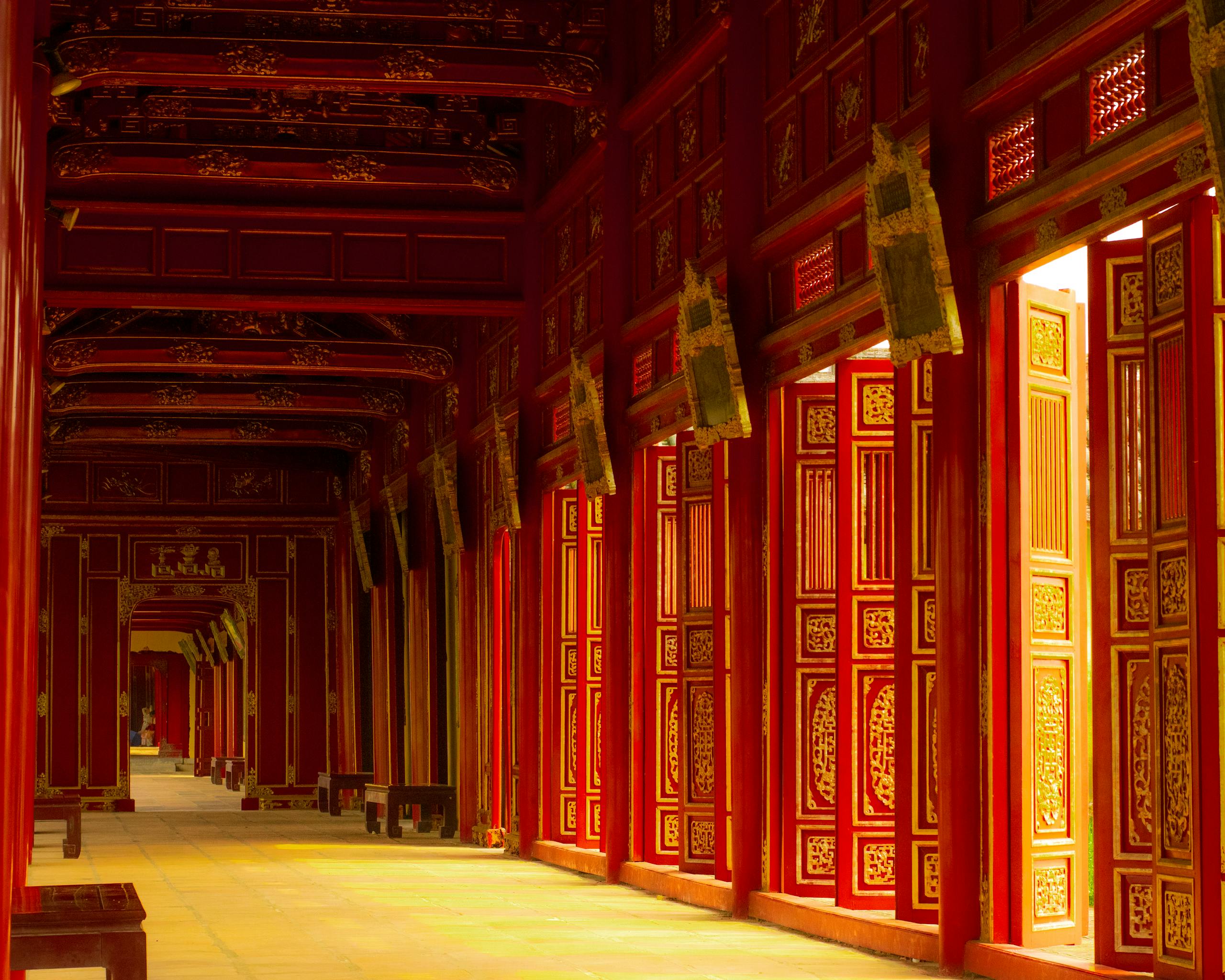
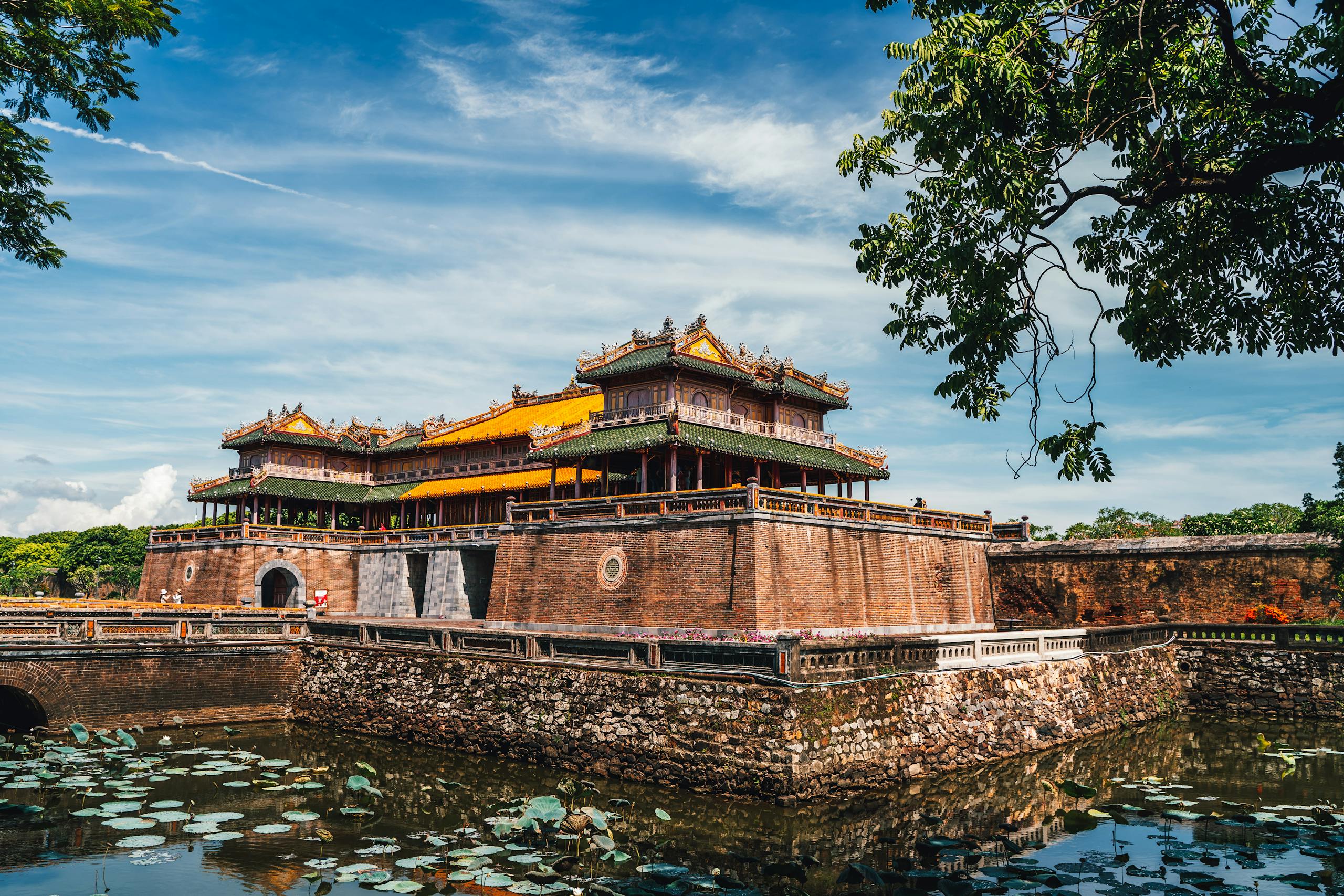
The Imperial City, also known as the Citadel, is the heart of Hue’s historical grandeur. This UNESCO World Heritage Site was the Nguyen dynasty’s political and cultural center, filled with impressive gates, fancy palaces, and peaceful temples. Don’t miss spots like the Thai Hoa Palace, the Nine Dynastic Urns symbolizing imperial power, and the majestic Noon Gate. Pro tip: visit early morning or early afternoon to dodge crowds and snap the best photos with great natural light.
Royal Tombs: History and Exploration Tips

Scattered along the beautiful Perfume River, the royal tombs each tell their own story with unique designs. The tombs of Minh Mang, Khai Dinh, and Tu Duc mix lavish royal style with natural harmony, offering a calm and meaningful peek into Nguyen dynasty funerary art. If you can, check out a few in one day—it really helps you understand how the dynasty’s style evolved. A local guide or a small group tour is great here because they add context and make getting around easier.
Other Must-See Sites: Temples, Pagodas, and Museums

Thien Mu Pagoda, with its famous seven-story octagonal tower overlooking the Perfume River, is a spiritual icon of Hue. Its rich history and stories make it a rewarding stop. Also worth visiting are Huyen Tran Princess Temple and Voi Re Temple, each with their own cool architecture and local tales.
The Hue Museum of Royal Antiquities houses a fascinating collection of royal stuff—everything from stunning costumes and delicate porcelain to old weapons. History buffs will love it as a way to add some indoor culture to all the outdoor exploring.
River Cruises and Local Markets for Authentic Experiences
Taking a Perfume River cruise is a relaxing way to see Hue’s beautiful architecture and countryside. Many cruises include traditional music and dance, which really add flavor to the journey.
If you want a taste of everyday Hue, Dong Ba Market is the place to go. It’s packed with fresh produce, tasty street food, and local handicrafts — perfect for getting a feel for local life and scoring some unique souvenirs.
- Hit popular spots early for cooler temps and a quieter vibe.
- Group your royal tomb visits to get a fuller picture without rushing.
- Wear comfy shoes—you’ll be walking a lot!
- Try local food at markets to round out your cultural adventure.
One- and Two-Day Itineraries to Maximize Your Time

Optimized One-Day Itinerary for First-Time Visitors
Start your day early at Dong Ba Market, Hue’s lively spot for breakfast, especially the famous bun bo Hue. Getting there around 7:30 to 8:00 AM means you’ll catch the authentic hustle before it gets busy.1
After breakfast, head to the Imperial City (Citadel). Spend 2 to 3 hours soaking up the stunning palaces, temples, and the unique vibe of the Forbidden Purple City. Arriving shortly after it opens (around 8:00 AM) helps you avoid crowds and enjoy cooler weather.2
For lunch, pick a nearby spot to try local favorites like nem lui or banh khoai. Then, spend your afternoon at the Thien Mu Pagoda, perched by the Perfume River—a perfect place to unwind and enjoy the scenery, plus it’s free entry.3
If you’ve got time and energy left, treat yourself to a short Perfume River cruise to see Hue from a different angle. Wrap up the day with a soothing foot massage at a local spa—your feet will thank you after all the walking.1
Detailed Two-Day Itinerary Combining Landmarks and Local Life
Day 1 is all about Hue’s historical gems: revisit highlights in the Imperial City, enjoy street food at Dong Ba Market, relax at Thien Mu Pagoda, and stroll along the Perfume River. In the evening, take a peaceful walk through the city center—way less crowded and very charming.2
Day 2 dives deeper into royal history and local culture. Start with one of the stunning royal tombs like Minh Mang, Tu Duc, or Khai Dinh, each with its own character and history.2
In the afternoon, visit Thanh Toan Village, famous for its historic covered bridge and old-school rural vibe, or check out An Bang Cemetery for a more offbeat cultural stop. Grab coffee by the river or wander more local markets to soak in everyday life.3
Options for Self-Guided Exploration vs. Organized Tours
If you like going at your own pace, self-guided tours work well around central Hue—places like the Imperial City and Dong Ba Market are easy to navigate on your own. Grab a motorbike taxi or use apps like Grab to reach spots a bit further out, like the royal tombs.1
But if you want history served with some expert insights and no guesswork on logistics, organized tours are worth it. You can find half-day or full-day options that include transport and knowledgeable guides, making it easy to cover distant places without stress.3
Tips for Efficient Sightseeing and Time Management
- Start your day early—beats the heat and crowds.
- Group nearby attractions logically—for example, visit Dong Ba Market with the Citadel, then pair Thien Mu Pagoda with a river cruise.
- Buy tickets online or get there early to skip long waits.
- Use motorbike taxis or ride-sharing apps to zip between far-flung spots.
- Focus on main highlights—the Imperial City, Thien Mu Pagoda, and one royal tomb—if your time’s tight.
- Stay centrally so you can walk or take quick rides to most attractions.
Follow these tips, and you’re set for an efficient, immersive, and memorable Hue adventure.
Savoring Hue: Local Cuisine and Dining Recommendations
Signature Dishes and Where to Try Them
Hue’s food scene, rooted in royal tradition, is full of bold flavors and intricate dishes. The must-try is Bun Bo Hue, a spicy beef noodle soup with lemongrass, chili oil, and fermented shrimp paste. A top spot? Bun Bo Hue O Cuong Cha Diep at 6 Tran Thuc Nhan Street.
Banh Beo, tiny steamed rice cakes topped with dried shrimp and scallion oil, are perfect little bites. Check out Banh Beo Ba Hoa and Banh Beo Hue Ba Cam, both on 10 Le Loi Street, for some of the best versions.
Nem Lui are grilled pork skewers wrapped in rice paper with fresh herbs and peanut sauce—Nem Lui Ba Ty at 81 Dao Duy Tu Street is a fan favorite.
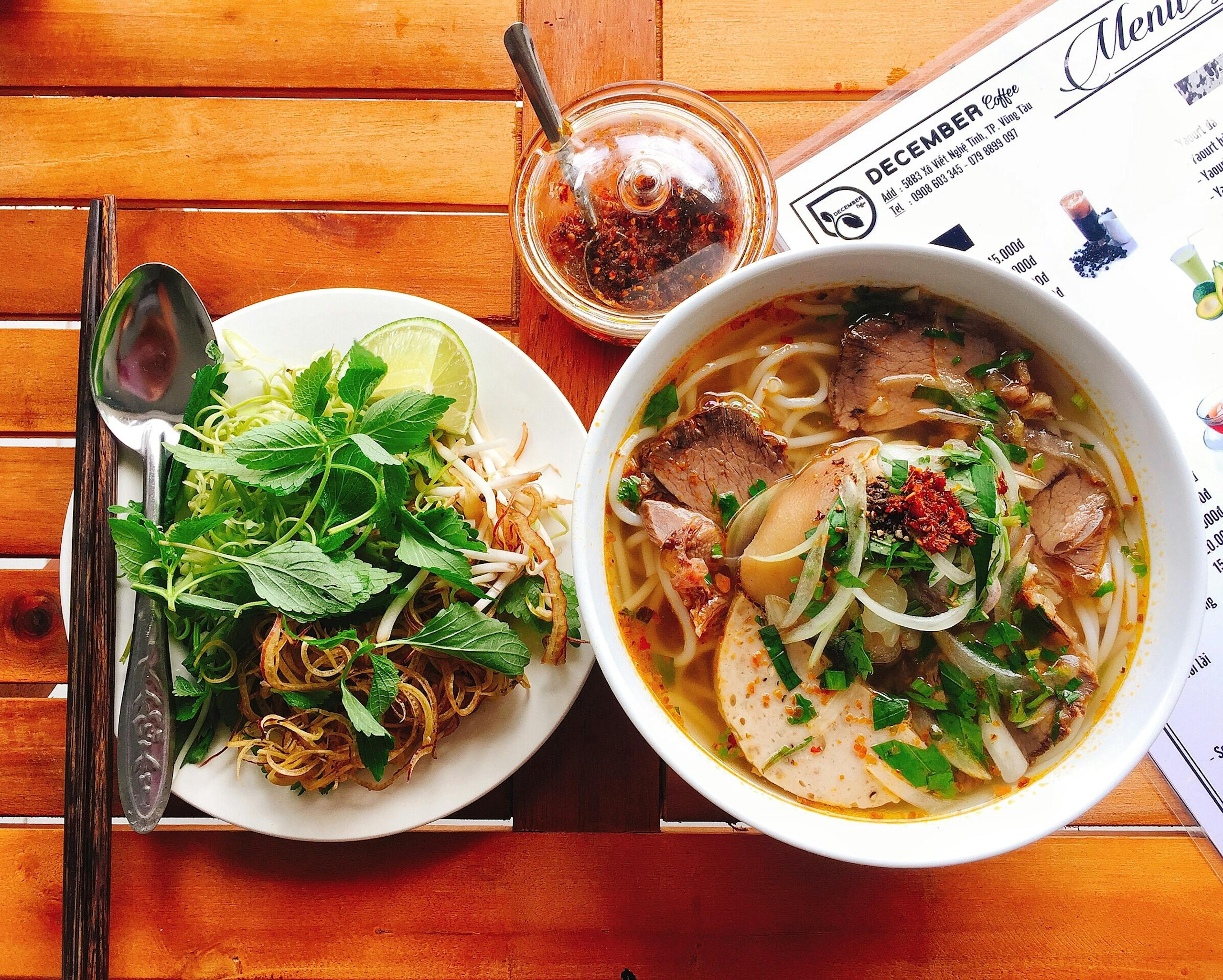
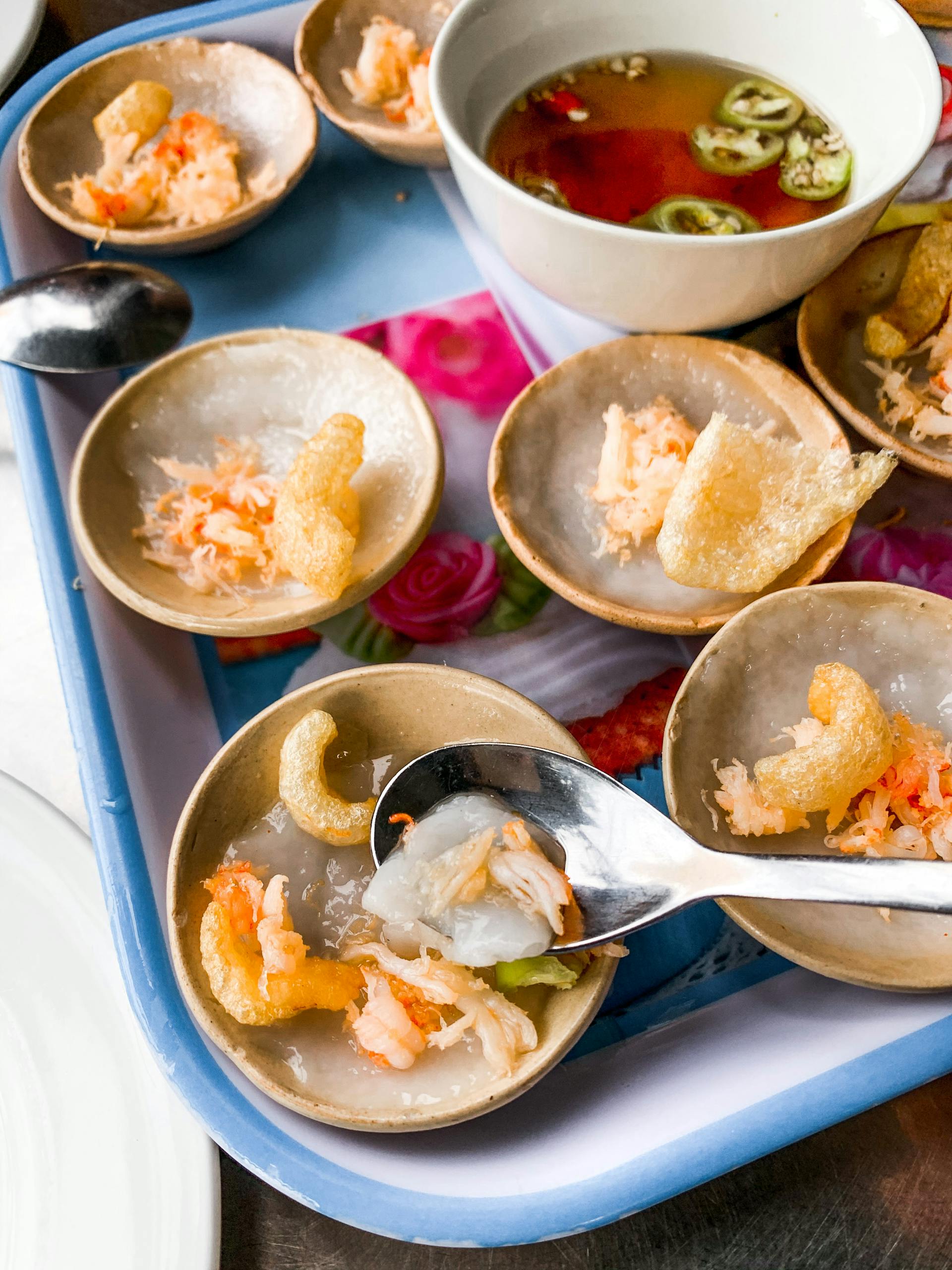
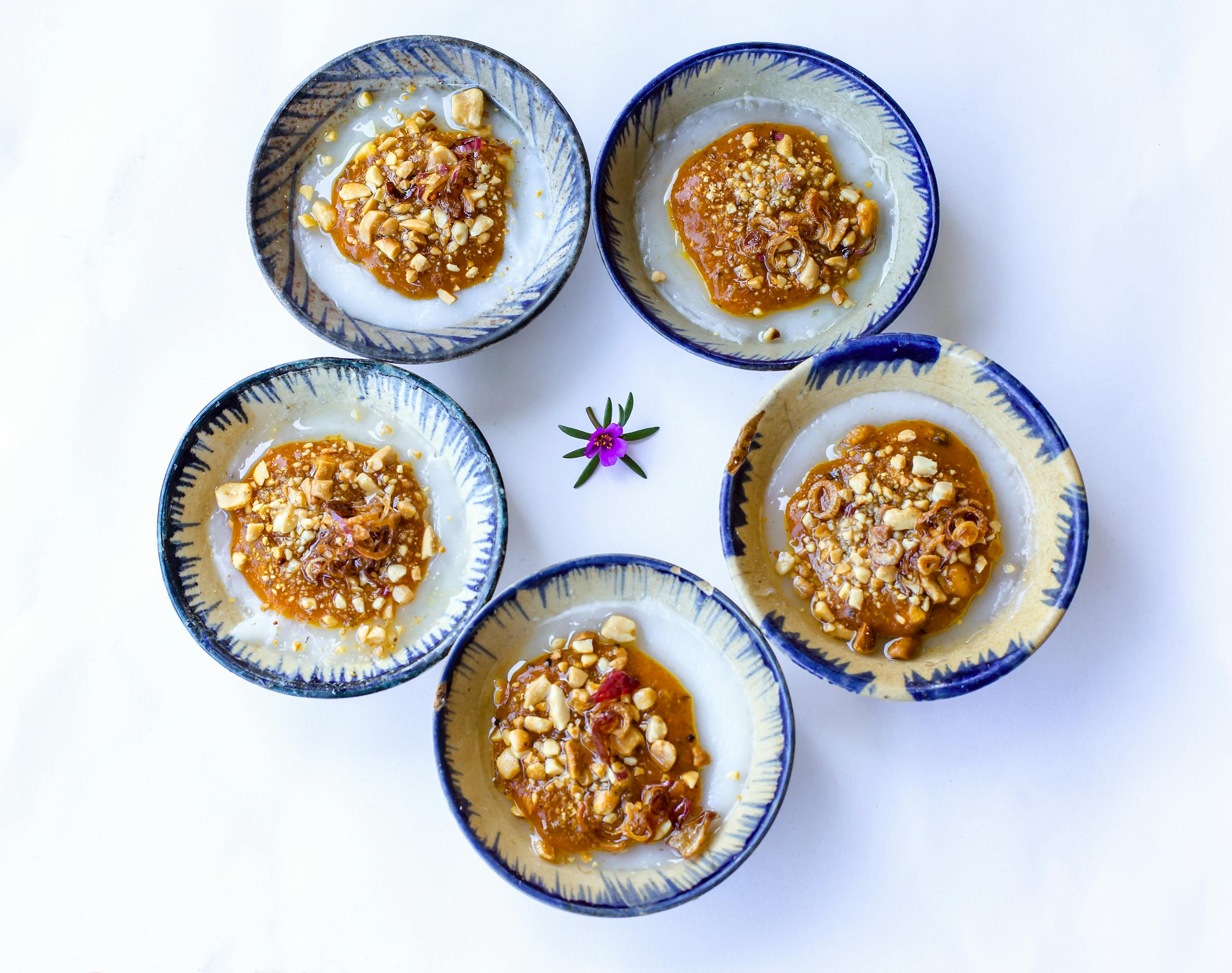
Com Hen is a savory clam rice dish often enjoyed at breakfast; try Com Hen Hoa Dong on 64 Alley 7 Ung Binh Street or stalls near Con Hen Islet.
For something crispy, Banh Khoai is a pancake filled with pork, shrimp, and bean sprouts—Banh Khoai Lac Thien at 6 Dinh Tien Hoang Street has it nailed.
Don’t miss Banh Nam and Banh Bot Loc, steamed dumplings with shrimp and pork wrapped in banana leaves. Banh Nam Co Thu (29 Dinh Tien Hoang Street) and Banh Nam Co Ba (12 Nguyen Binh Khiem Street) are local favorites.
And for bread lovers, the Hue-style Banh Mi stuffed with spicy lemongrass pork at Banh Mi Truong Tien O Tho is a must-try.
Popular Local Restaurants and Street Food Spots
- Quán Bánh Bèo Nậm Lọc Huế Xưa – Famous for authentic Banh Beo.
- Ba Hoa: A go-to for traditional Hue dishes.
- Bánh Bèo Nậm Lọc Bà Đỏ: Great for steamed dumplings.
- Cơm hến Hoa Đông: Known for tasty clam rice.
- Nem Lui Ba Ty: Loved for grilled pork skewers.
- Lạc Thiện Restaurant: Celebrated for crispy pancakes.
- Bánh Mì Trường Tiền O Tho: Popular for spicy Central Vietnamese banh mi.
Tips for Dining Like a Local
- Go where the crowds go. Busy, no-frills spots usually mean fresh, authentic food.
- Share plates. Many places serve family-style, so you can taste a bunch of dishes.
- Order small portions. Street foods come in small sizes, letting you sample lots without overeating.
- Don’t shy away from dips and fresh herbs. They take the flavors up a notch.
- Eat during peak times. Breakfast and evenings after 6 pm are bustling with street food action.
- Stick to a budget. Most street snacks cost under $2 USD, so eating well won’t break the bank.
- Be adventurous. Try drinks like salt coffee and local sweets for a real taste of Hue.
Where to Stay in Hue: Accommodation Options for Every Traveler

Top Rated Hotels and Guesthouses with Reviews
Hue has a little something for everyone when it comes to places to stay.
If you’re after luxury, Azerai La Residence stands out with its elegant 1930s Art Deco style right on the Perfume River. It has an outdoor saltwater pool, a spa, and a highly praised restaurant that mixes Vietnamese and French flavors. Guests rave about its atmosphere and friendly service.
Other luxurious options like Pilgrimage Village Resort & Spa and Melia Vinpearl Hue also get great reviews for comfort and hospitality.
For those wanting modern conveniences in a central spot, White Lotus Hotel is popular—near Trang Tien Bridge with a pool.
Mid-range places like EMM Hotel Hue and Scarlett Boutique Hotel offer cozy rooms, nice service, and are close to shops and eateries, making them favorites with both newbies and repeat visitors.
Budget-Friendly Accommodation Suggestions
Traveling tight on cash? There are plenty of great budget spots in Hue that don’t skimp on comfort or cleanliness. The Pisces Hotel gets mentioned a lot for affordability and friendly staff.
Some mid-range hotels like EMM and White Lotus can dip below $50–$60 USD per night if you avoid peak season.
Plus, hostels and guesthouses near the city center and along the Perfume River often start around $11 USD a night—perfect for backpackers or anyone wanting a more local feel.
Choosing the Best Location for Your Travel Plans
Where you stay in Hue depends on what you’re after and your budget.
The city center is prime for first-timers who want quick access to big sights like the Imperial City, markets, and plenty of restaurants—all within walking distance.
If peace and a romantic vibe are more your thing, pick places along the Perfume River. The views and quiet atmosphere make it great for couples or anyone looking to unwind.
And if convenience and easy transport links matter, consider staying near main squares or transport hubs like the railway station—it’s handy for day trips or if you rely on buses or trains.
Summary Table: Choosing Your Hue Accommodation
| Location | Best For | Accommodation Types | Nearby Attractions |
|---|---|---|---|
| City Center | First-time visitors, sightseeing | Hotels, guesthouses, hostels | Imperial City, Dong Ba Market, restaurants |
| Perfume River | Romantic stays, luxury experience | Luxury hotels, boutique stays | River cruises, peaceful scenic views |
| Main Squares/Transport Hubs | Convenience for transfers | Mixed budget options | Railway station, city access |
No matter what you’re comfortable with, picking the right place and neighborhood will definitely boost your Hue trip.
Getting Around Hue: Transportation Tips and Options

Public Transport Overview and Practicality
Hue’s public bus system is pretty basic but budget-friendly. It covers the central districts and nearby towns, with buses running every 30 to 60 minutes. Routes link key spots like Dong Ba Market, Phu Bai Airport, and Thuan An Beach. Buses are cheap and give you a real local vibe, but keep in mind they can be slow and crowded—not the best if you’re tight on schedule.1
Bicycle and Motorbike Rentals for Independence
Renting bikes or motorbikes is by far the most popular way to explore on your own. Hue’s relatively flat and quiet streets make cycling a pleasant option. Plenty of rental shops in the city center offer flexible deals by the hour or day—perfect for checking out the Imperial City, tombs, and neighborhoods at your own speed. Motorbikes get you farther afield but make sure you’re confident riding and always wear a helmet.1
Using Taxis, Rideshares, and Guided Transport Services
Taxis and rideshare apps like Grab are easy and convenient around Hue. Metered taxis are trustworthy if you’d rather skip driving, while rideshares are often cheaper and super easy to book on your phone. For airport rides or day trips to places like Da Nang or Hoi An, private car hires with English-speaking drivers are a comfy, flexible choice.1
Walking: A Simple Yet Rewarding Option
Walking works great in central areas like Vinh Ninh and Phu Hoi, where many hotels, cafes, and sights are clustered. Strolling lets you absorb Hue’s charm at your own pace and discover little surprises along the way. There are even organized walking routes that highlight the city’s history and daily life—perfect if you like taking things slow.
| Transport Mode | Best For | Cost | Notes |
|---|---|---|---|
| Public Bus | Budget travelers, local experience | Very low | Infrequent, basic comfort |
| Bicycle/Motorbike Rental | Independent exploration | Affordable | Great for short to medium trips; be cautious |
| Taxis and Rideshares | Convenience, quick trips | Moderate | Easy to hail or book on apps |
| Private Car and Guided Services | Day trips, airport shuttles | Higher cost | Flexible schedules, English-speaking drivers |
| Walking | Short distances, sightseeing | Free | Best around central neighborhoods |
Pro tip: Mix walking or biking in central Hue with occasional taxi or rideshare rides when you need to cover longer distances. It’s a good way to balance costs, freedom, and comfort.
Planning Your Budget: Cost Estimates and Money-Saving Tips

Typical Costs for Attractions, Food, and Accommodation
Hue is famous for being wallet-friendly, which makes it a fave for budget travelers. Admission fees to places like the Imperial City and royal tombs generally range from about $2 to $10 USD. Many temples and markets are free or super cheap, so you can soak up culture without spending much.
When it comes to food, street stalls and local eateries offer meals as low as $1 to $3 USD. Mid-range restaurants usually cost between $3 and $7 USD. Fancy or Western-style places are pricier but still pretty reasonable compared to back home.
Accommodation varies a lot. Dorms and homestays can be as low as $6 to $15 USD per night, sometimes including dinner. Budget hotels fall in the $15 to $25 USD range, and 3-star spots with breakfast typically run from $50 to $80 USD per night. Hostels are everywhere, and if you book last-minute, you might snag some good deals.
Tips for Budget Travel in Hue
Save bucks by munching at street vendors or family-run restaurants instead of tourist traps. Stick to walking or biking since lots of top spots are close by, cutting transport costs.
Try homestays or budget guesthouses for an authentic vibe. Booking late or locally can land you better rates. Local buses are less than a dollar per ride, and renting a motorbike for $5 to $8 daily gives you freedom without the pricey tab.
Travel off-season to dodge the crowds and steep prices. Bring a refillable water bottle—it’s better for your wallet and the planet. When shopping or booking tours, polite bargaining is the norm and can really stretch your dollars.
How to Manage Expenses Efficiently
Keep track of what you spend—whether with a notebook or app—to stay on budget. Use Vietnamese dong (VND) to get the best exchange rates.
Cash is king for small buys, so withdraw bigger amounts at once to cut ATM fees and stay safe.
Shop around a bit on tour prices, both online before you go and locally after you arrive. Prices can change. Focus on free or cheap cultural activities to get the most bang for your buck.
Budget Summary (per person, per day):
| Budget Level | Accommodation | Food | Attractions & Transport |
|---|---|---|---|
| Backpacker/Shoestring | $6–$15 (hostels, homestays) | $1–$3 (street food) | $3–$12 (free/cheap sites, public transport) |
| Midrange | $15–$25 (budget hotels) | $3–$7 (local restaurants) | $10–$20 (paid attractions, motorbike rental) |
| Upscale | $50–$80+ (3-star and above) | $7+ (high-end dining) | $20+ (private tours, taxis) |
Practical Travel Tips for a Smooth Hue Experience

Best Times to Visit and Weather Considerations
For the nicest weather, plan your Hue trip during the dry season from March to August. Warm days with little rain make sightseeing and outdoor stuff like the Imperial City, royal tombs, and Perfume River strolls a treat.13
Hue has two main seasons: hot and dry, then cooler and wet.
From September to December, heavy rains and storms show up a lot and can mess with plans.
So, if you can, try to go in March, April, or early May for better weather and fewer tourists.
Heads up though—during dry season, temps can soar past 35°C (95°F), so pack sunscreen, light clothes, and drink lots of water.123
Other handy tips:
- Book hotels and tours early during peak season — stuff fills up fast.
- If you’re visiting in the rainy season, bring good rain gear, especially from September to December.
- Hit major attractions early to dodge crowds and the midday heat.
- Markets and riverfronts come alive in the cooler late afternoons.
- Take motorbikes or taxis to far-out spots like Hai Van Pass.
Safety Tips and Health Precautions
Hue’s pretty safe, but like any place, watch out for stuff like pickpockets, traffic craziness, and food or bug-related illnesses.13
Stay safe by:
- Keeping your valuables close in busy areas.
- Crossing streets calmly and confidently despite chaotic traffic.
- Renting motorbikes only if you know what you’re doing; always wear helmets and get insurance.
- Using trusted taxis like Mai Linh or Vinasun; confirm prices or insist on meters.
Keep healthy by:
- Using mosquito repellent and opting for air-conditioned rooms when you can.
- Steering clear of tap water and being careful with raw fruits or buffets.
- Wearing sunscreen and protective clothing outdoors.
- Carrying a small first-aid kit with basics like bandages and antiseptics.
- Drinking bottled or purified water regularly to stay hydrated.
- Knowing where local clinics or hospitals are, just in case.
Follow these tips, and you’ll have a safe, healthy, and fun time exploring Hue’s historic and cultural gems.135
Local Etiquette and Cultural Do’s and Don’ts
Respecting local customs not only enriches your visit but also makes for friendlier interactions with Hue’s people. Dress modestly, especially at temples and heritage sites—cover your shoulders and knees. You might need to take off your shoes at pagodas.13
Socially, keep in mind:
- A gentle bow or soft handshake works well, especially with elders.
- Learning simple Vietnamese phrases like “xin chào” (hello) and “cảm ơn” (thank you) goes a long way.
- Keep things quiet and respectful, especially in religious or rural areas.
- Wait for hosts to start eating, and pass things politely—using both hands.
- Bargaining at markets is expected—do it nicely!
Things to avoid:
- Don’t touch someone’s head—that’s a big no-no.
- Avoid pointing your feet toward altars, statues, or elders.
- Take off hats and sunglasses indoors or when talking to elders.
- Always ask before snapping pictures of people, especially monks or those in traditional dress.
Stick to these, and you’ll be greeted warmly wherever you go.135

Frequently Asked Questions for First-Time Visitors
Is Hue safe for tourists?
Yep, Hue is generally safe. Just stay alert in busy spots and watch your stuff.
What’s the best way to get around Hue?
Walking is common in central Hue. Taxis, motorbike taxis, and Grab rides are reliable. You can rent motorbikes for more freedom, but be careful and experienced.
Any tips for crossing the street?
Walk steadily and confidently, don’t rush. Watch how locals cross—they take it slow and stay alert.
Is tipping expected in Vietnam?
Tipping’s appreciated but not a must. Around 5–10% in tourist restaurants is fair.
Can I use credit cards in Hue?
Major hotels and posh restaurants take cards, but cash is king at markets and small shops.
Keep these in mind, and your first trip to Hue will go smoothly.23
Insights from Locals: Authentic Experiences and Sustainable Travel

Interviews and Stories from Local Guides
Chatting with local guides opens up a whole new side of Hue beyond the usual tourist paths. They often share stories about hidden gems like craft villages, authentic food markets, and cozy family-run homestays.
Taking part in community events, cooking classes, or lacquer painting workshops adds depth to your trip and creates special memories.
Plus, booking outings with trusted local agencies helps support the people and communities behind the scenes—not just the tourist biz.1
Recommendations for Eco-Friendly and Responsible Travel
Travel smart by choosing eco-friendly places that focus on renewable energy and cutting waste. Look for certified sustainable businesses and ask about their green practices before booking.
Simple things like using less plastic, picking low-carbon transport, and respecting natural and cultural sites help protect Hue’s fragile environment. Opt for tours that support conservation and local communities to make sure your visit leaves a positive mark.35
How to Support Local Communities During Your Visit
You can help Hue’s locals by spending your money in ways that really matter. Stay at locally owned guesthouses, eat at small family-run spots, and buy crafts straight from artisans.
Join community tourism projects that protect culture and promote social wellbeing. If you want, volunteer or donate to social enterprises to boost your impact. Listening to locals’ advice on how travelers can help ensures your time here truly uplifts the community.45
- Tip: Use local guides and services endorsed by tourism boards and ask about their eco-friendly efforts.
- Tip: Join workshops and cultural events to experience authentic Hue and support artisans.
- Tip: Carry reusable water bottles and bags to cut down on waste during your travels.
Final Thoughts
This detailed Hue travel guide has hopefully given you a solid grasp of the city’s imperial roots, vibrant culture, and essential sights. From wandering the UNESCO-listed Imperial City and calm royal tombs to tasting genuine local food and figuring out transport like a pro, you’ve got what you need to make the most of your trip. The neat itineraries and budget tips mean your visit will be not just fun and easy but also made to fit your style.
As you get ready for your 2025 visit to Hue, remember to embrace local customs, support sustainable tourism, and connect warmly with the welcoming folks. Whether it’s your first time or you’re coming back, Hue’s timeless charm promises memories you won’t forget—so pack smart, keep this guide handy, and get ready to dive into Vietnam’s ancient capital!
- Key Takeaways
- Why Visit Hue in 2025? Cultural and Historical Significance
- Top Attractions in Hue: Essential Landmarks and Experiences
- One- and Two-Day Itineraries to Maximize Your Time
- Savoring Hue: Local Cuisine and Dining Recommendations
- Where to Stay in Hue: Accommodation Options for Every Traveler
- Getting Around Hue: Transportation Tips and Options
- Planning Your Budget: Cost Estimates and Money-Saving Tips
- Practical Travel Tips for a Smooth Hue Experience
- Insights from Locals: Authentic Experiences and Sustainable Travel
- Final Thoughts
Get your FREE Monstera Art download
Join our WanderLife Studios mailing list to get updates about our work and be the first to know about upcoming art products.
As a Thank You Gift, you will get this wonderful hand-drawn Monstera Line Art as a digital download for FREE .
